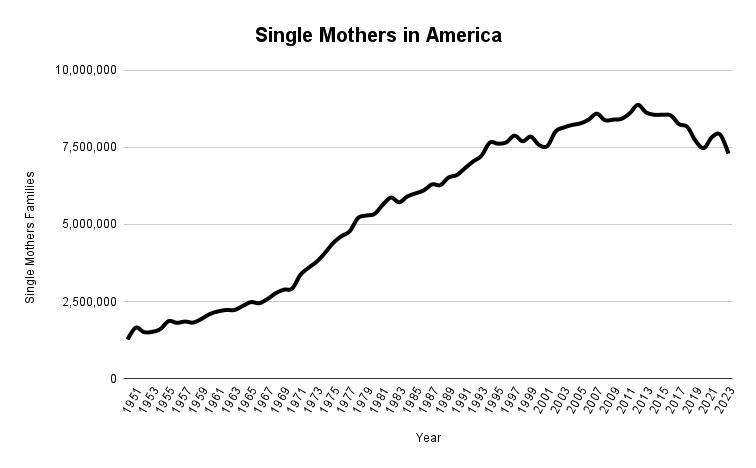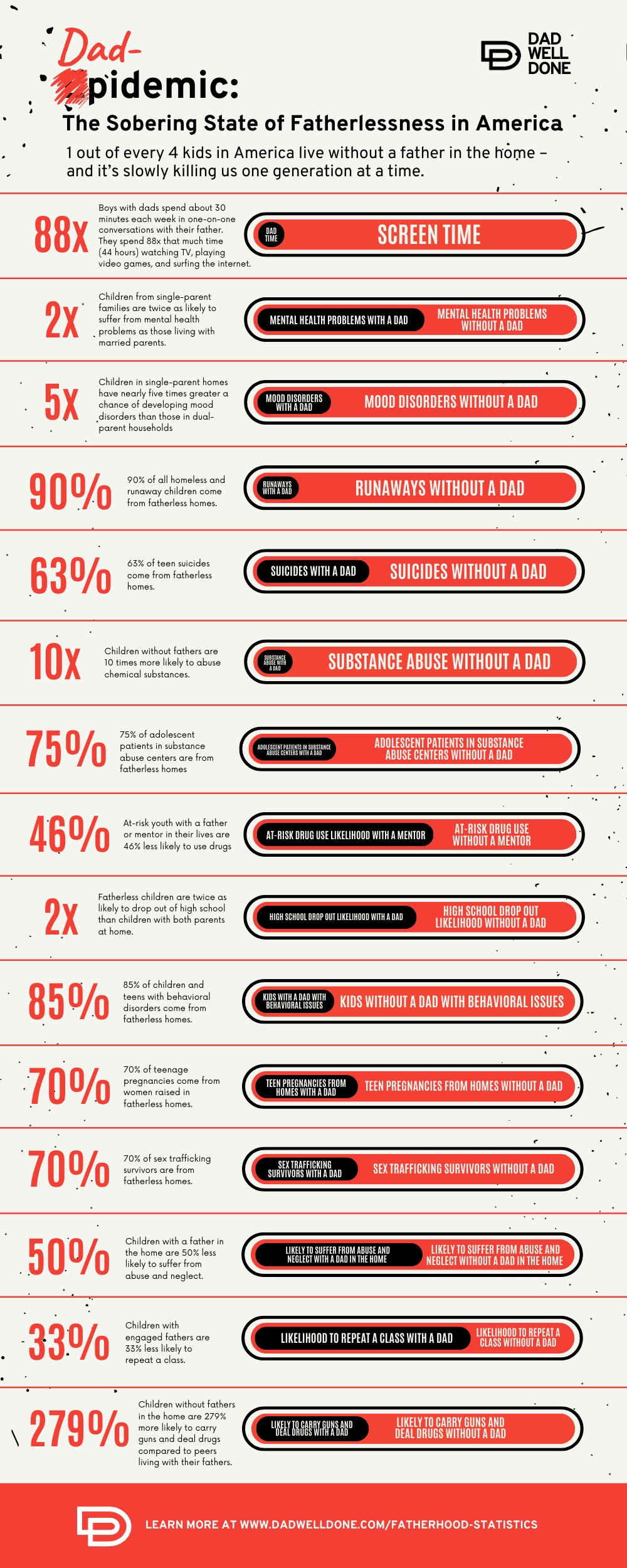Fatherhood Statistics: Fatherlessness Has Reached Epidemic Proportions
The role of fathers in the upbringing of children cannot be understated. Recent statistics shed light on the far-reaching consequences of fatherlessness in American society. These statistics highlight the alarming reality that fatherlessness is directly connected to most of our social, emotional, and behavioral issues we face as a culture today.
Fatherhood Statistics
In America, fathers have become increasingly absent in the home – and their disappearance has increased at an alarming rate over the last 70+ years.

The absence of fathers from the home has led to drastic and far-reaching implications – the impact of which has been degrading the mental, emotional, spiritual, and physical health of an entire generation,
It’s no stretch to say that America is wasting away from the disease of disengaged fathers.

For children with a father present in the home, the average school-age boy only spends about 30 minutes per week in one-on-one conversations with his father. The same boy, on average, will spend about 44 hours per week watching television, playing video games, and surfing the internet
Children from fatherless homes have been proven to struggle more with overall well-being, mental and behavioral health, lower self-esteem, anxiety, social withdrawal, depression, suicide, and other forms of self-harm.
Children from single-parent families are twice as likely to suffer from mental health problems as those living with married parents.
High-risk children in single-parent homes have nearly five times greater a chance of developing mood disorders than those in dual-parent households, even when controlling for household income, age, and depression status of parents.
90% of all homeless and runaway children come from fatherless homes.
63% of teen suicides come from fatherless homes.
85% of children and teens with behavioral disorders come from fatherless homes.
Fatherless families are 25% more likely to raise children in poverty.
Children without fathers are 10 times more likely to abuse chemical substances.
71% of all children who abuse substances come from fatherless homes.
75% of adolescent patients in substance abuse centers are from fatherless homes
“At-risk youth” (defined as “a child who is less likely to transition successfully into adulthood”) with a mentor in their lives are 46% less likely to use drugs and 81 percent more likely to participate in sports or other forms of extracurricular activities.
Fatherless children are twice as likely to drop out of high school than children with both parents at home.
Children with engaged fathers are 33% less likely to repeat a class.
“At-risk youth” who have a mentor are 55% more likely to enroll in college than those without a mentor in their lives activities.
70% of teenage pregnancies come from women raised in fatherless homes. These same women have significantly higher abortion rates than women raised by both a father and a mother.
85% of all youths in prison come from fatherless homes.
Fatherless kids are 20 times more likely to be incarcerated.
Children without fathers in the home are 279% more likely to carry guns and deal drugs compared to peers living with their fathers.
“At-risk” kids with mentors are 78% more likely to volunteer regularly.
90% of “at-risk” kids with mentors are interested in becoming a mentor themselves.
“At-risk” kids with mentors are 130% more likely to hold leadership positions.
70% of sex trafficking survivors are from fatherless homes.
Children with a father in the home are 50% less likely to suffer from abuse and neglect.
Children with a father in the home are 40% less likely to smoke, drink, or use drugs.
Children who feel a closeness to their father are half as likely to experience multiple depression symptoms.
The National Center for Missing and Exploited Children reported that 60% of missing children associated with sex trafficking were living in foster care when they ran away.
Children in homes of drug or alcohol abuse, domestic violence, or other dysfunctional families were prime targets for recruitment with 91% of victims claiming to have experienced some kind of neglect at home according to Michigan State Trooper Steven Kramer’s statistics.
One in five runaway and homeless youth are a victim of human trafficking- inclusive of sex and labor trafficking.
68% of the youth who had either been trafficked or engaged in survival sex or commercial sex had done so while homeless.
Fatherlessness is plaguing America.
The statistics presented in this article offer a comprehensive view of the far-reaching effects of fatherlessness on American society.
From academic struggles to mental health challenges, substance abuse, and involvement in the criminal justice system, the absence of a father figure has a profound impact on the lives of children.
Recognizing these trends underscores the urgent need for programs and initiatives that support fathers and families, ultimately working towards a more stable and nurturing environment for the next generation.
